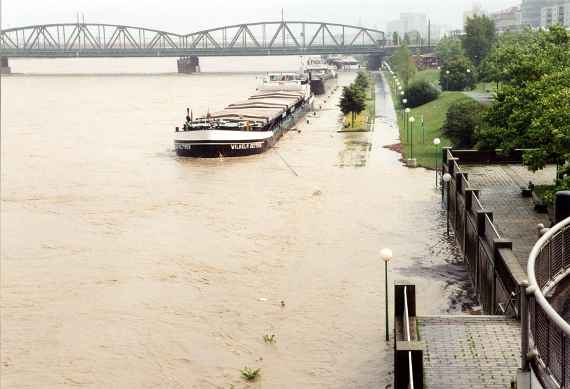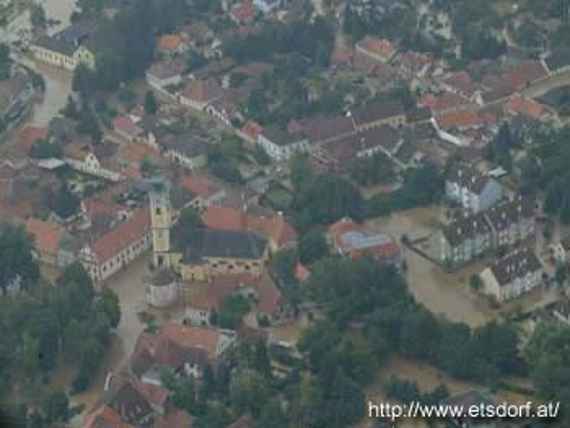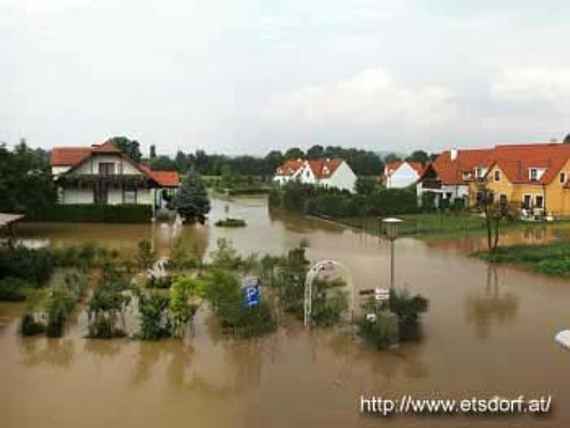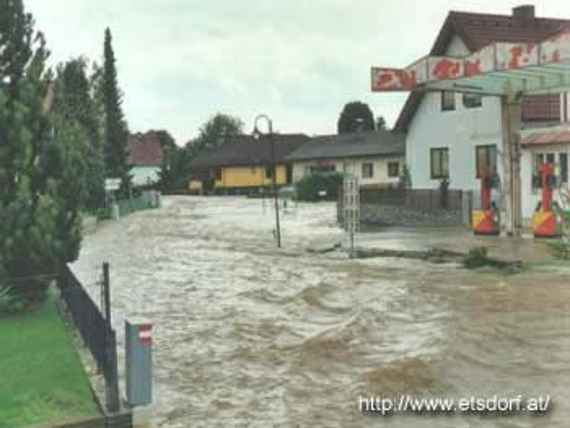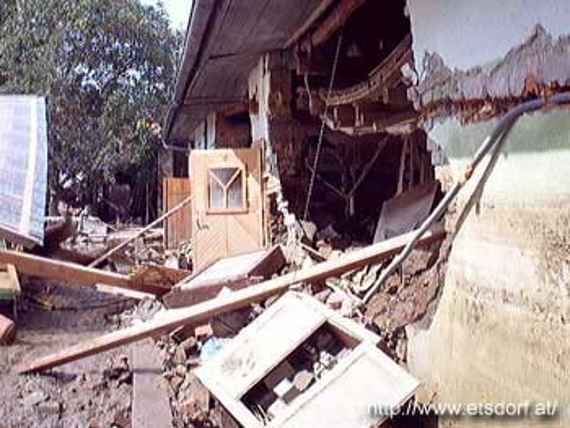In August 2002, extreme rainfalls caused a huge flood that claimed nine lives and led to catastrophic damage amounting to some three billion euros. Based on an event documentation of the University of Natural Resources and Applied Life Sciences, an interdisciplinary project will investigate the causes and draw conclusions for the future based on past experience. The aim is to minimize the damage caused by similar future events. The institute leads the work package Geomorphology in the overall project. This work package deals with the influences of soil erosion, suspended-solids and sediment transport as well as changes in the shape of water bodies (morphology). In case of a flood, it might happen that the river cuts out a new bed and, further on, flows elsewhere.
Commissioned by: Federal Ministry of Agriculture, Forestry, Environment and Water Management, Water Section
The project is partly funded by Switzerland.
The overall project is organized in 10 work packages:
- Meteorology
- Hydrology
- Geomorphology
- Natural hazards
- Danube
- Damage balancing
- Law
- Regional Planning
- Civil Protection
- Policy
The work package Geomorphology led by the institute is divided into five subprojects.
- Soil erosion
Author: Federal Agency for Water Management, Institute for Land and Water Management Research.
Task: Determination of the influence of land use on soil erosion during heavy rainfall as a basis for strategies to reduce soil loss and reduce the input of suspended solids into water bodies.
Objectives: Directives for the sustainable use of agricultural land in order to minimise damage caused by soil erosion and deposition of suspended solids in case of extreme floods.
- Suspended solids
Author: University of Natural Resources and Applied Life Sciences, Institute for Water Management, Hydrology and Hydraulic Engineering.
Task: Determination of the proportion of flood damage attributed to suspended solids.
Objectives: Identification of the contribution of suspended solids to flood damage and environmental impacts and of existing deficits related to sediment transport in running waters.
- Bed load
Author: University of Natural Resources and Applied Life Sciences, Institute for Water Management, Hydrology and Hydraulic Engineering.
Task: Determination of the proportion of flood damage attributed to bed load transport.
Objectives: Identification of the contribution of bed load to flood damage and environmental impacts and of existing deficits related to sediment transport in running waters.
- River-meadow soils
Author: University of Natural Resources and Applied Life Sciences, Institute for Soil Research.
Task: Determination of flooded areas in the past (over the past ten to twelve thousand years) by means of river-meadow soil mapping.
Objectives: Estimation of the size of past floods (inundation areas) beyond the period of human memory and historical records and answering the question whether there has ever been such a large flood before.
- Synthesis - Strategies
Author: University of Natural Resources and Applied Life Sciences, Institute for Water Management, Hydrology and Hydraulic Engineering, together with the Lead Partner of the Work Package: Federal Agency for Water Management / Institute for Hydraulic Engineering and Calibration of Hydrometrical Current-Meters.
Task: Synthesis of the results from the four subprojects Soil erosion, Bed load, Suspended solids and River-meadow soils. Development of applicable strategies for the future, identification of deficits and synthesis with the other work packages of the overall project.
Objectives: Presentation of the interaction of flowing water, sediment transport and shape of the water body (morphology) in the human used riverine zone. Development of strategies for dealing with extreme events (ranging from the construction of new flood protection measures to the maintenance and care of water bodies and disaster management).
Flood in the center of Etsdorf
Flood in Sittendorf
High flood in the village Haitzendorf
Destroyed houses in the village Kamp

